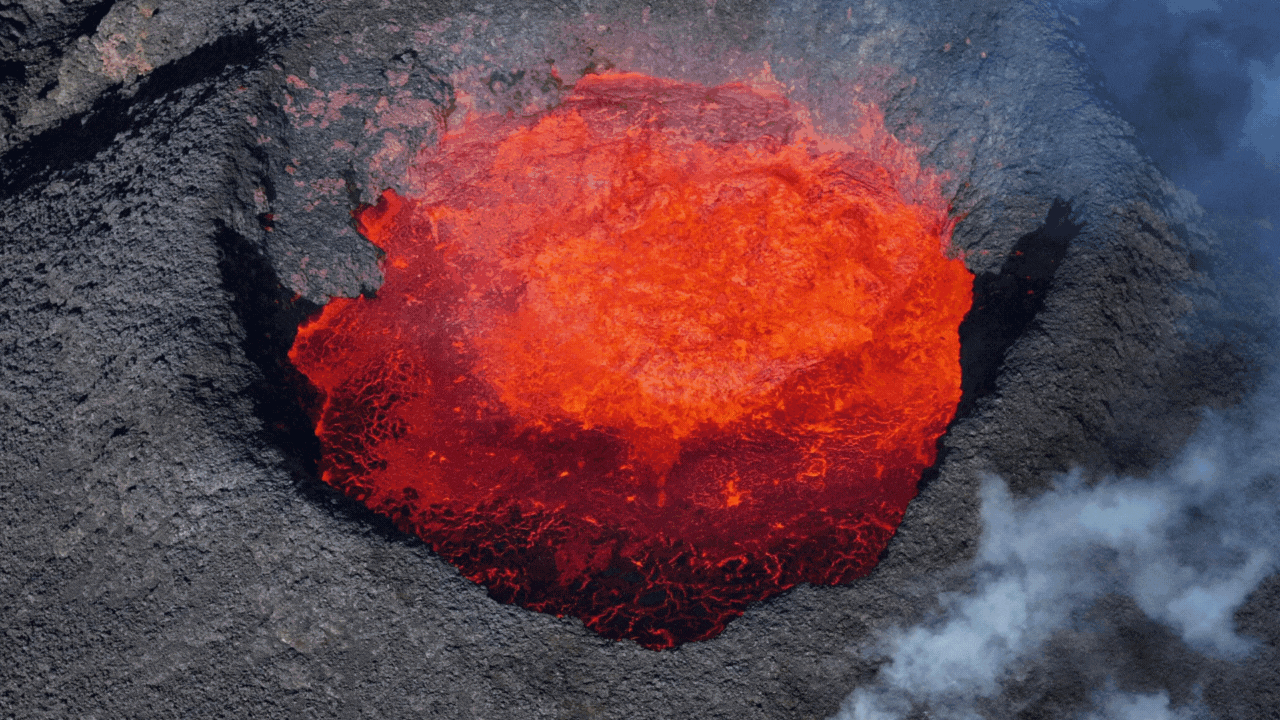NEW DELHI: A volcano in southwestern Iceland erupted on Wednesday for the fifth time since December, posing a renewed threat to the coastal town of Grindavik and prompting the evacuation of the famous Blue Lagoon geothermal spa. The eruption followed a series of earthquakes north of the town, which had been largely evacuated in December when the volcano first came to life after centuries of inactivity.
Although the volcanic activity began to subside by early evening, it was considered the most intense eruption in the area thus far. Lava shot up to 50 meters (165 feet) into the sky from a fissure that extended to 3.5 kilometers (2.1 miles) in length, according to the Icelandic Meteorological Office.
Protective barriers erected around Grindavik successfully diverted the lava flow, which had already cut off two of the three roads leading to the town and was approaching the third. Mayor Fannar Jonasson told national broadcaster RUV, “It’s a much larger volume that’s on the move right now headed for town. The lava has already conquered (a lot).”
As a precautionary measure, workers and remaining residents were instructed to evacuate earlier in the day. The Blue Lagoon thermal spa, a popular tourist destination, was also evacuated before the eruption began.
Scientists observed a dark plume of ash rising above the crater at one point, resulting from an explosive interaction between magma and groundwater. Although the cloud did not reach a height that posed an immediate threat to aviation, scientists continued to monitor the situation closely, as reported by Johanna Malen Skuladottir of the Met Office to RUV.
Grindavik, located approximately 50 kilometers (30 miles) southwest of Iceland’s capital, Reykjavik, has been under threat since November when a swarm of earthquakes triggered an evacuation prior to the initial eruption on December 18. Subsequent eruptions in February and March overwhelmed some defensive walls and consumed several buildings, with the February 8 eruption engulfing a pipeline and cutting off heat and hot water to thousands of people.
Iceland, situated above a volcanic hot spot in the North Atlantic, experiences regular eruptions and is well-equipped to handle them. The most disruptive eruption in recent history was that of the Eyjafjallajokull volcano in 2010, which released massive ash clouds into the atmosphere, leading to widespread airspace closures across Europe.
Although the volcanic activity began to subside by early evening, it was considered the most intense eruption in the area thus far. Lava shot up to 50 meters (165 feet) into the sky from a fissure that extended to 3.5 kilometers (2.1 miles) in length, according to the Icelandic Meteorological Office.
Protective barriers erected around Grindavik successfully diverted the lava flow, which had already cut off two of the three roads leading to the town and was approaching the third. Mayor Fannar Jonasson told national broadcaster RUV, “It’s a much larger volume that’s on the move right now headed for town. The lava has already conquered (a lot).”
As a precautionary measure, workers and remaining residents were instructed to evacuate earlier in the day. The Blue Lagoon thermal spa, a popular tourist destination, was also evacuated before the eruption began.
Scientists observed a dark plume of ash rising above the crater at one point, resulting from an explosive interaction between magma and groundwater. Although the cloud did not reach a height that posed an immediate threat to aviation, scientists continued to monitor the situation closely, as reported by Johanna Malen Skuladottir of the Met Office to RUV.
Grindavik, located approximately 50 kilometers (30 miles) southwest of Iceland’s capital, Reykjavik, has been under threat since November when a swarm of earthquakes triggered an evacuation prior to the initial eruption on December 18. Subsequent eruptions in February and March overwhelmed some defensive walls and consumed several buildings, with the February 8 eruption engulfing a pipeline and cutting off heat and hot water to thousands of people.
Iceland, situated above a volcanic hot spot in the North Atlantic, experiences regular eruptions and is well-equipped to handle them. The most disruptive eruption in recent history was that of the Eyjafjallajokull volcano in 2010, which released massive ash clouds into the atmosphere, leading to widespread airspace closures across Europe.
Denial of responsibility! News Continue is an automatic aggregator of the all world’s media. In each content, the hyperlink to the primary source is specified. All trademarks belong to their rightful owners, all materials to their authors. If you are the owner of the content and do not want us to publish your materials, please contact us by email – [email protected]. The content will be deleted within 24 hours.


